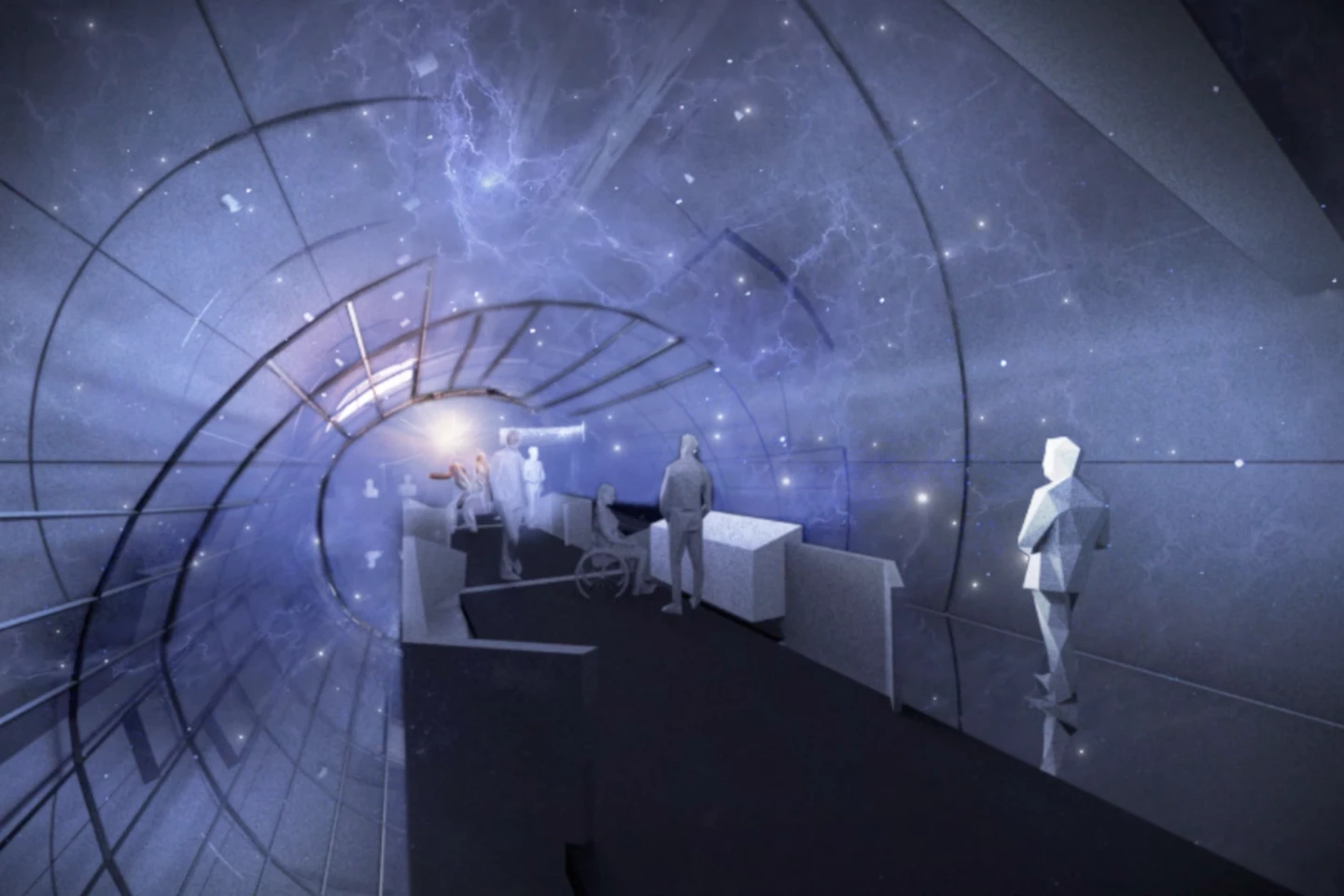we are experience designers
new assignment tinker: the cern science gateway


Tinker imagineers dives into science again. We were selected to develop the experience design of two large areas of the CERN Science Gateway, due to open to the public in 2023. One on the history of the evolving universe and the other about unsolved mysteries in physics. Both of them will be part of the new scientific education and outreach centre of CERN, the European Organization for Nuclear Research, which conducts research into the foundations of nature.
Tinker is teaming up with Dutch partners for the engineering and realisation of their design. Bruns for the production of the exhibits, YIPP will take care of the interactives and Mansveld supplies AV hardware and lighting solutions. The four parties are frequent collaborators and are well-known players in the global exhibition design industry.
The iconic 7000-square-metre building, designed by the world-renowned architects of Renzo Piano Building Workshop in collaboration with Brodbeck Roulet Architectes Associés, will offer a variety of spaces, activities and exhibitions about the research subjects of CERN. Ranging from the outer universe to the tiniest particle, from telescopes to quantum mechanics.
Back to the Big Bang
The exhibition Back to the Big Bang features the history of the evolving universe, from galaxies to quarks. Visitors go back in time, observing the history of the universe from the present back to the beginning and travelling right up to the brink of what we know. There, at that edge of our knowledge, CERN research plays its role.
Into the Future
The Into the Future exhibition will reveal the five biggest mysteries in modern physics: Gravity and Extra Dimensions, Dark Matter, Antimatter, the Higgs Field, and the Vacuum. A variety of ground-breaking questions will be discussed. What is gravity, why is it so weak compared to other dimensions, and is our understanding of it correct? Does a whole new family of particles exist, and can we detect it in our experiments? Could there be an infinite number of parallel universes, covering all possible varieties of parameters of the Higgs Field? What is dark energy and how does it influence our universe? The exhibition contains several artworks, inspired by these mysteries. The visitors are immersed in the works, and also in an in-depth explanation of the science that inspired them.
The purpose of the new science centre is to create a hub of science education and culture to enthuse younger generations about the beauty of science. The Science Gateway will include exhibition spaces, laboratories for scientific experiments for children and students, and a large amphitheatre to host science events for experts and non-experts alike. Hands-on experiments will be a key ingredient of the Science Gateway’s educational programme, allowing visitors to experience first-hand what it’s like to be a scientist. The immersive activities available in the Science Gateway will foster critical thinking, evidence-based assessment, and the use of scientific methods – important tools in all walks of life.
Iconic building
The Science Gateway will be hosted in a new, iconic building on CERN’s Meyrin site and next to another of CERN’s iconic buildings, the Globe of Science and Innovation. It will be designed by world-renowned architects Renzo Piano Building Workshop in collaboration with Brodbeck Roulet Architectes Associés. The vision for the Science Gateway was inspired by the fragmentation and curiosity inherent to the CERN site and buildings, so the new centre is made up of multiple elements that are embedded in a green forest and interconnected by a bridge spanning the main road leading to Geneva. ‘It’s a place where people will meet,’ says Renzo Piano. ‘Kids, students, adults, teachers, and scientists, everybody attracted by the exploration of the Universe, from the infinitely vast to the infinitely small. It is a bridge, in the metaphorical and real sense, and a building fed by the energy of the sun, nestling in the midst of a newly grown forest.’
Prompted by CERN’s unique facilities, such as the Large Hadron Collider (LHC, the world’s largest particle accelerator), the architecture of the Science Gateway celebrates the inventiveness and creativity that characterise the world of research and engineering. Architectural elements such as tubes that seem to be suspended in space evoke the cutting-edge technology underpinning the most advanced research that is furthering our understanding of the origins of the universe.
A bridge across the Route de Meyrin will dominate the brand-new Esplanade des Particules and symbolise the inseparable link between science and society.
Image header: Renzo Piano Building Workshop in collaboration with Brodbeck Roulet Architectes Associés
Image left: Tinker imagineers